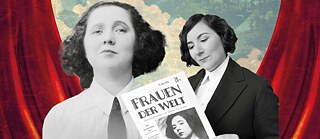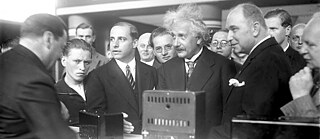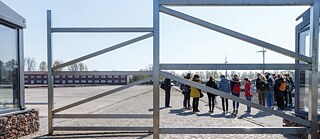Exile in Paradise Villa Aurora and Thomas Mann House in Los Angeles
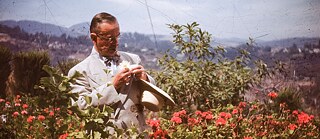
During the Nazi regime, many German artists and intellectuals found refuge in Southern California. The authors Lion Feuchtwanger and Thomas Mann were among the most prominent “exiles in paradise”. Join us on our audio voyage to their former homes in Los Angeles, that still inspire transatlantic art fellows today.
Kerstin Zilm produced the following feature for the podcast The Big Pond to mark the Year of German-American Friendship in 2018. Zilm is a German expat herself: she moved to LA in 2003 to work as a foreign correspondent and has been based there ever since, working for radio, print media and television.
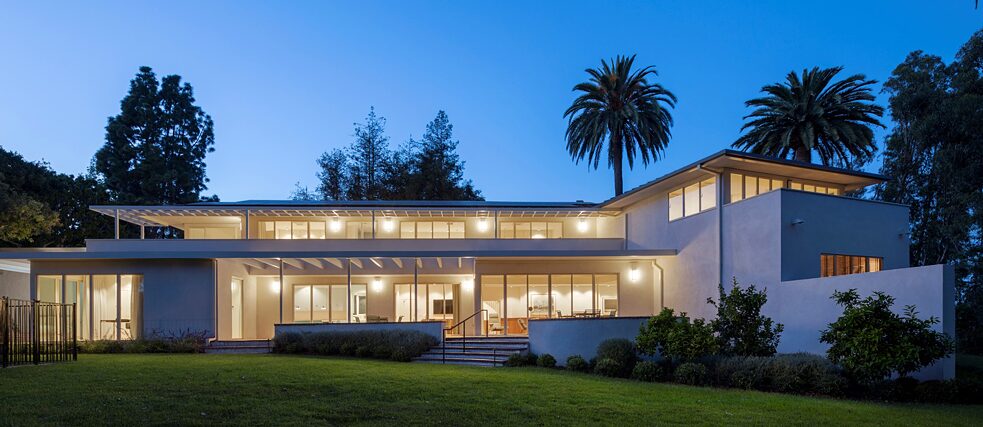 Thomas Mann House in Pacific Palisades, Los Angeles
| © Josh Cho, Courtesy of Thomas Mann House
Thomas Mann House in Pacific Palisades, Los Angeles
| © Josh Cho, Courtesy of Thomas Mann House
Transcript
Kerstin Zilm: During the Nazi Regime, German artists, scientists, and other intellectuals found refuge in Southern California. Lion Feuchtwanger and Thomas Mann were two of the more prominent “exiles in paradise.” Their new surroundings reminded them of the Mediterranean while they were constantly thinking about the country, friends, and family they had to leave behind. Exile, transatlantic relationships, and debates about pressing global issues — those themes fill Feuchtwanger’s and Mann’s former homes again today. Take a trip to the Villa Aurora and the Thomas Mann House in Pacific Palisades.Margit Kleinman: Feuchtwanger himself was then under the Vichy government interned in the South of France for about six months, in Les Milles, an internment camp. And she, Marta, was only interned for a couple of weeks in a women’s camp.
Kerstin Zilm: Margit Kleinman, director of the Villa Aurora, tells the story about how Lion and Marta Feuchtwanger came to Los Angeles. She leads a spontaneous tour through the maze of rooms, staircases, and hallways, across creaky wooden floors, past black and white pictures, drawings, and busts. About 15 visitors follow her through the last home that the Feuchtwangers created for themselves. Lion died in California in 1958, his wife almost thirty years later, in 1987. Lion Feuchtwanger had been a critic of Adolf Hitler since the 1920s. The Nazis took away his German citizenship and publicly burned his books. The couple first fled to Southern France, which proved to not be safe.
Margit Kleinman: ... and finally, with the help of — among other people — Eleanor Roosevelt and American diplomats they managed to smuggle Feuchtwanger out of the internment camp in women’s clothes. And then they immediately went on foot over the Pyrenees mountains into Spain. The same group was joined by Heinrich and Thomas Mann. It was a very dangerous, very perilous trip. When they were in Spain they went to Lissabon and from Lissabon they took the ship to New York.
Margit Kleinman: It was affordable. It cost 9,000 dollars. Then it was about three years of salary for a school teacher. They could afford it. They got an advance for Feuchtwanger’s next novel. And so they moved in. They had to do a lot of repairs. Some neighbors helped. It is said that they spent the first couple of days or nights in the garden because they had to clean up, windows were broken and all that stuff.
[APPLAUSE]
Kerstin Zilm: Hanno Leichtmann, a composer and sound artist, plays examples of his art from the computer. He is staying in Lion Feuchtwanger’s former bedroom for three months, but during his stay he mostly composes and experiments in the Villa’s music studio. The small room in the back of the house used to be Marta Feuchtwanger’s favorite spot, where she had her Sherry and welcomed visitors. Leichtmann likes to explore the city. Even traffic in Los Angeles has become an inspiration for the artist.
Kerstin Zilm: From the Villa Aurora it is only a fifteen-minute drive on Sunset Boulevard to another former hub of European exiles in Los Angeles: 1550 San Remo Drive. This is the former home of world-famous writer and Nobel laureate Thomas Mann. He lived here with his family from 1942 to 1952.
[MUSIC PLAYING IN THE BACKGROUND]
Kerstin Zilm: In June 2018, black limousines parked on the winding streets surrounding the house announce important visitors. The two-story building is hidden from the streets among eucalyptus and palm trees, oleander bushes and bougainvilleas. The last weeks have been busy and noisy. The house has just been renovated. Now visitors from the United States and Europe mingle in the yard. Students and professors, artists and intellectuals, neighbors, politicians, and journalists are waiting for Frank-Walter Steinmeier, Germany’s federal president. He has travelled to Los Angeles to officially open the property for its new mission. While a DJ entertains the crowd outside, inside Thomas Mann’s grandson Frido Mann shares stories about the place. In a white suit and with animated gestures he talks about the times he spent here as a kid. He visited the place a lot from the age of two until he was nine years old. Frido even went to school in Pacific Palisades before the Manns left for Switzerland.
Kerstin Zilm: Frido Mann points from the sofa to the fireplace and the porch where, he says, the grandfather, his family and friends listened to records and live piano music, sometimes even played by Thomas Mann himself. Frido remembers reciting poems in the living room. Most of all, he recalls how the house was filled with passionate discussions about current events and political developments in Europe and the United States. The groups gathered here were also regulars at the Feuchtwanger Villa. The conversations often spilled out into the yard. When the weather was good, Frido says, everybody just wanted to sit outside on the porch in the sun.
Kerstin Zilm: The Mediterranean climate was one reason for the Mann family to stay in California. Like the Feuchtwangers, they loved the views to the mountains and the ocean. But most of all they felt the freedom to express themselves that had been destroyed at home in Nazi Germany. Thomas Mann enthusiastically supported the USA’s form of democracy. In June 1944 he became a U.S. citizen. Once the family decided to stay, they wanted to build their own home. They bought the property and hired architect Julius Ralph Davidson, who was also a German-speaking immigrant. He was instructed to create a family home with separate chambers for Thomas Mann, where he could write, relax and focus in his study without being distracted. It took a while until the house was ready for them to move in, but once the family had settled in, they loved it. Thomas Mann called it “Das Haus zu den sieben Palmen,” “The House of the Seven Palm Trees.” At his desk surrounded by bookcases he looked through big windows out into the yard. Here he wrote essays, speeches, lectures, and novels as well as his famous letters to the German people, broadcast by the BBC:
Kerstin Zilm: Mann wrote more than 50 of those audio letters. They were five to eight minutes long, pointed dissections of the political situation and the war in Europe. He called on the Germans to stand up for moral values and to acknowledge the unspeakable acts committed by the Nazi regime. Mann foresaw a dark future for Germany, which — he was convinced — would be overwhelmed by growing hatred once the war machinery broke down.
Kerstin Zilm: The California paradise showed its shadows shortly after the end of war. The United States, the country that Thomas Mann saw as an example of a thriving democracy, changed. During the McCarthy era the writer found himself, friends, critical minds, and fellow artists under scrutiny again. The freedom of speech and tolerance he always had admired gave way to suspicions, accusations, and surveillance. The family left for Switzerland in 1952 and sold the house. It came on the market again in 2016. “Five bedrooms, four baths, a four-car garage, great mountain and ocean views,” the realtors raved in their ad. They did not mention the famous previous owner. Instead, they highlighted the opportunity to build a new, more modern and bigger house at a desirable location. Again, the German government stepped in and bought the property for 15 million dollars in order to create a space for transatlantic discussions. Like the Villa Aurora, the Thomas Mann House will host fellows, but instead of inviting mostly young artists to work undisturbed by specific requirements to produce their own works, this house will welcome established scholars, artists, and researchers who are expected to ignite discussions in the spirit of its former owner. Program director Nikolai Blaumer explains:
Kerstin Zilm: The past is present in the Thomas Mann House and in the Villa Aurora. Their missions connect the German exiles who found a refuge in Southern California, their stories and their art, their thoughts and their beliefs with the here and now. No matter who comes to stay in these buildings a few months at a time, they will all contemplate what it means to be separated from your home, your language and your culture. They will imagine what it means to stand up for your values and raise your voice for democracy. They will stand among palm trees, gaze towards the ocean and imagine how many people are looking for refuge today. Then they will create their art, write essays, books and speeches, and come home with a new perspective on what it means to live in exile in paradise. This is Kerstin Zilm reporting from Los Angeles.
